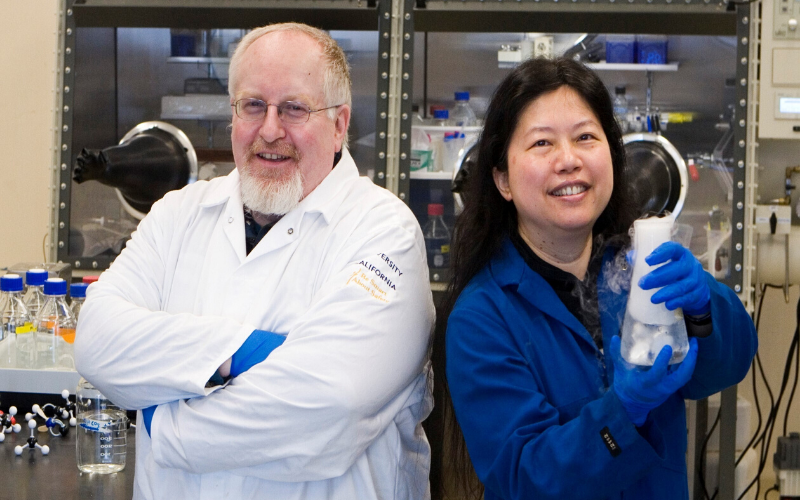
Molecular Biology and Biochemistry Professors Yilin Hu and Markus Ribbe have been delving deep into the field of bacterial nitrogenase and related systems. In a recent study published in Science, the researchers report new structural and mechanistic insights into the nitrogenase reaction.
Nitrogen is one of the key elements needed to build the organic molecules necessary for life. It is found abundantly as the dinitrogen (N2) gas, making up over 75% of the air we breathe. The N2 gas, however, is very stable and does not break apart into usable forms within the body. Fortunately, certain bacteria are capable of converting N2 into accessible forms of nitrogen that can be used to construct the building blocks of proteins and nucleic acids for many living creatures, including humans. Only bacteria perform this critical reaction because they can produce the nitrogenase enzyme.
Nitrogenase is a complex enzyme that uses a suite of metallocofactors to catalyze the energetically demanding reduction of N2 to ammonia under ambient conditions. Professors Hu and Ribbe found that the three sulfur sites at the “belt region” of the FeMo cofactor are labile during catalysis, with the cofactor of one subunit of the enzyme having one, and the other subunit of the enzyme having two, of the three belt sulfur atoms replaced by distinct dinitrogen species during the binding and reduction of N2. These findings are entirely unexpected and shed light on the sparsely understood mechanisms of N2 reduction, pointing to a key role of belt sulfur displacement in proper nitrogenase function.
The molecular depiction of the N2-bound state of nitrogenase has remained the central goal of nitrogenase research for nearly four decades. The structural snapshot reported by Professors Hu and Ribbe is critical for understanding the strategy devised by nature for the binding and activation of the inert gas dinitrogen to make the essential element nitrogen available for every living organism on earth. Moreover, given that ammonia is an excellent carbon-free fuel source, knowledge derived from this study is also crucial for future development of nitrogenase-based biotechnological and industrial applications, which have profound implications for the energy- and environment-related areas.
